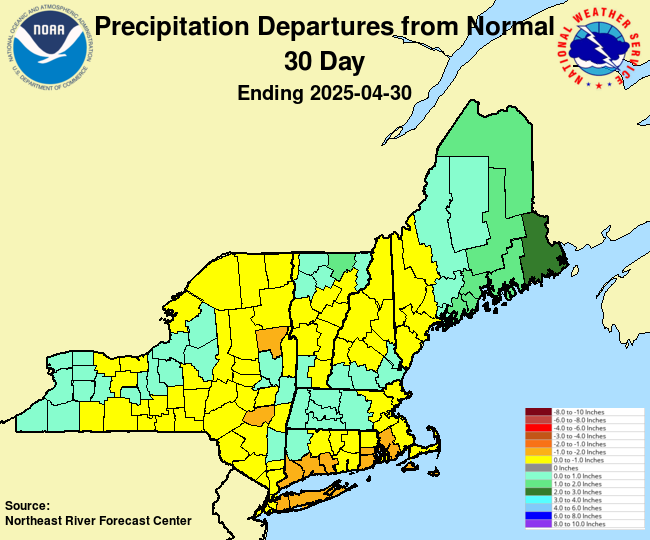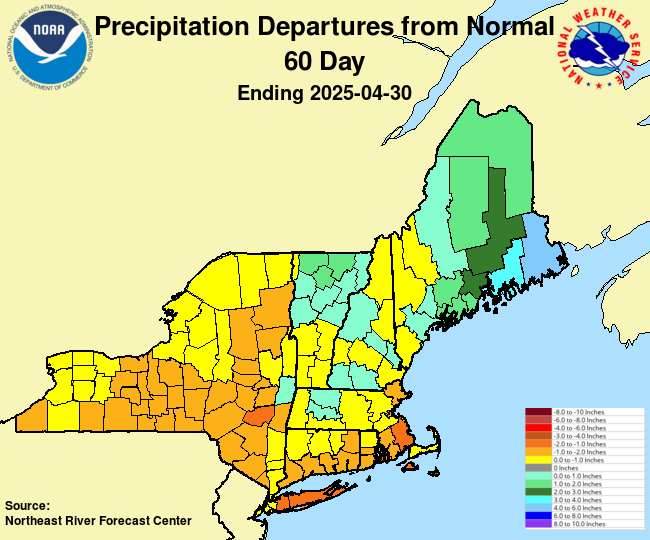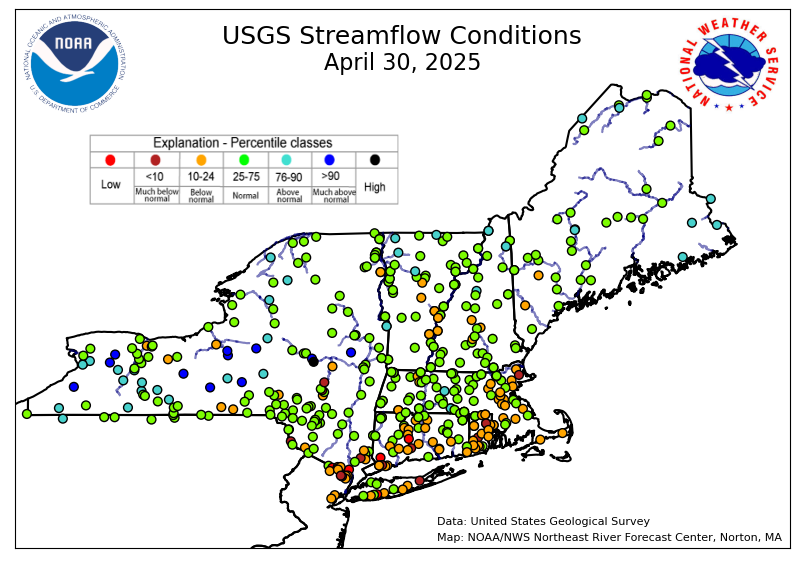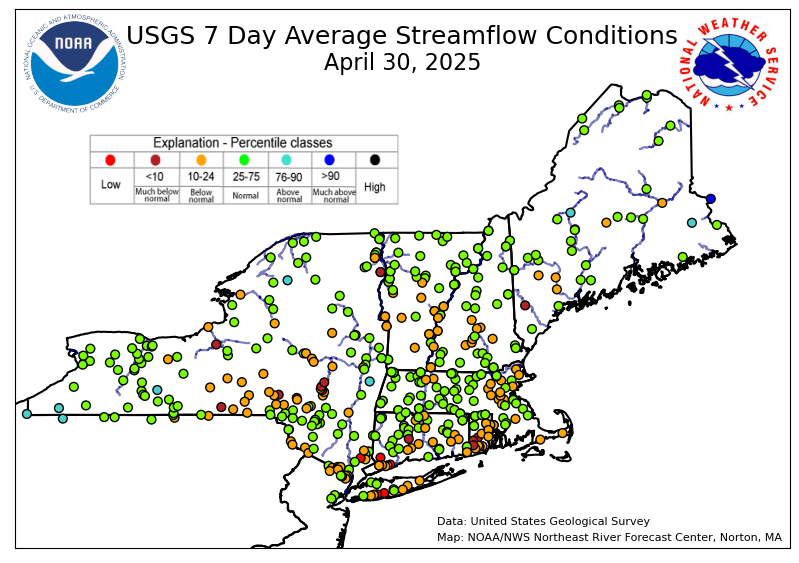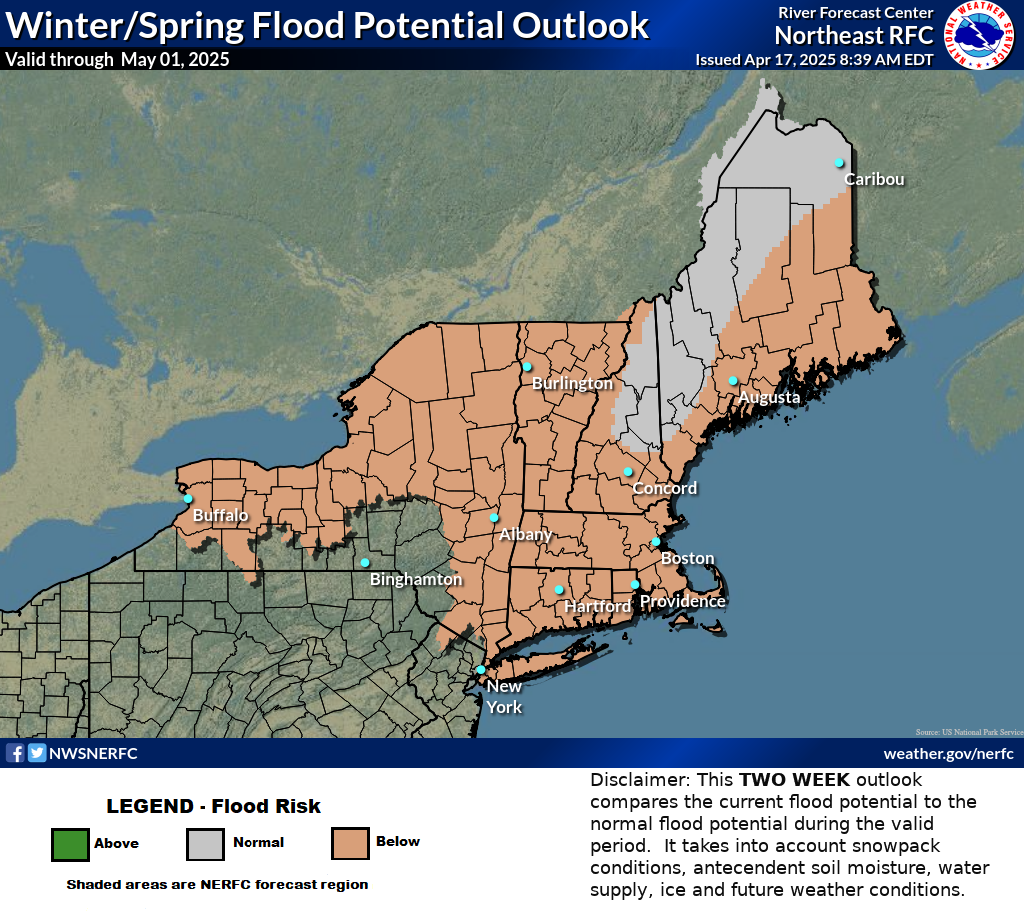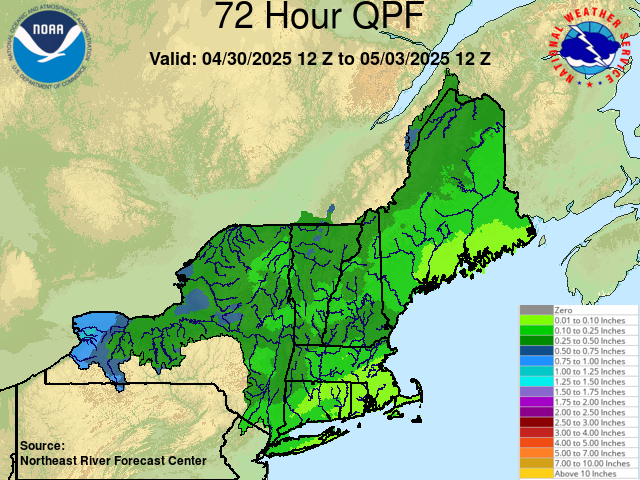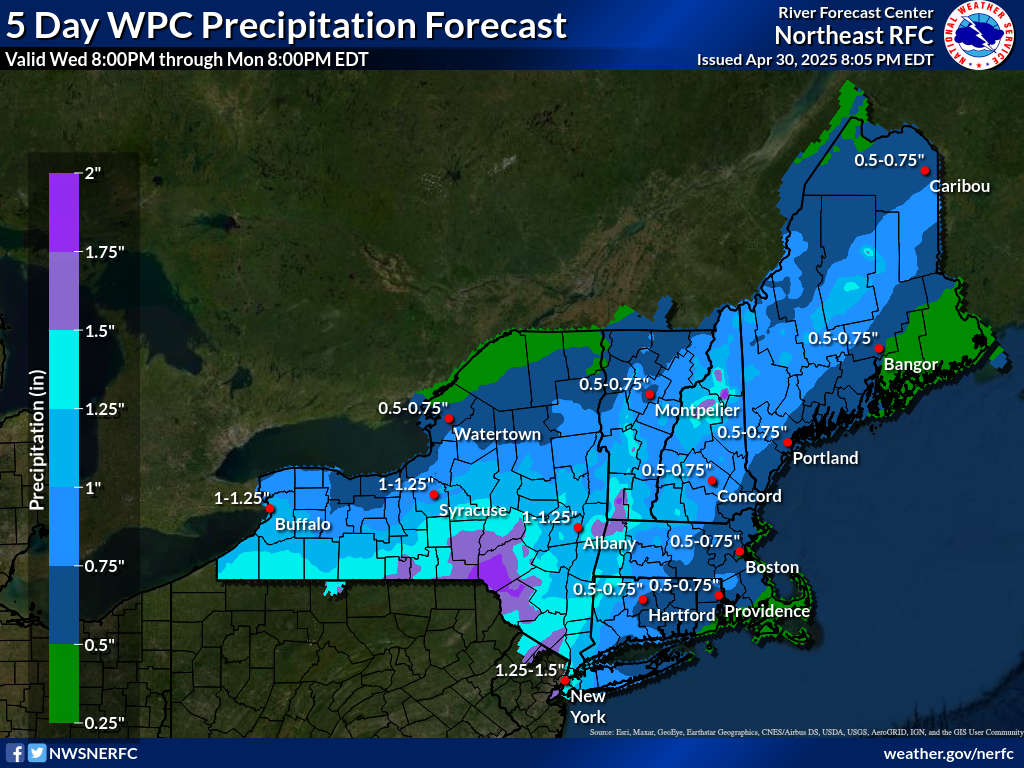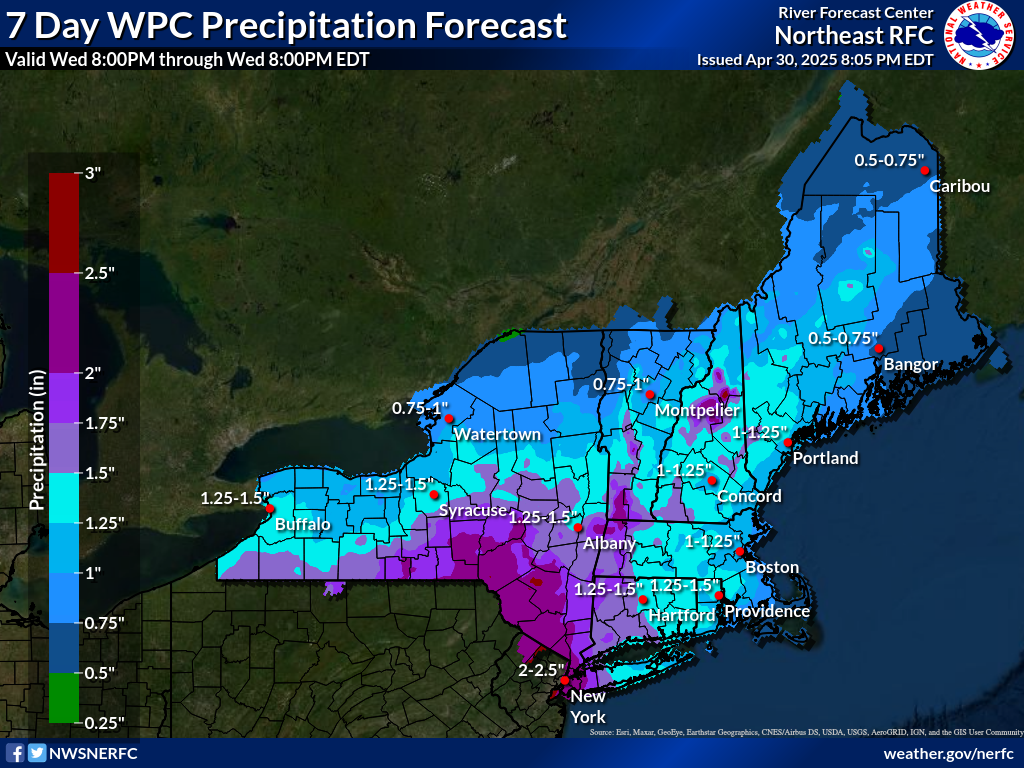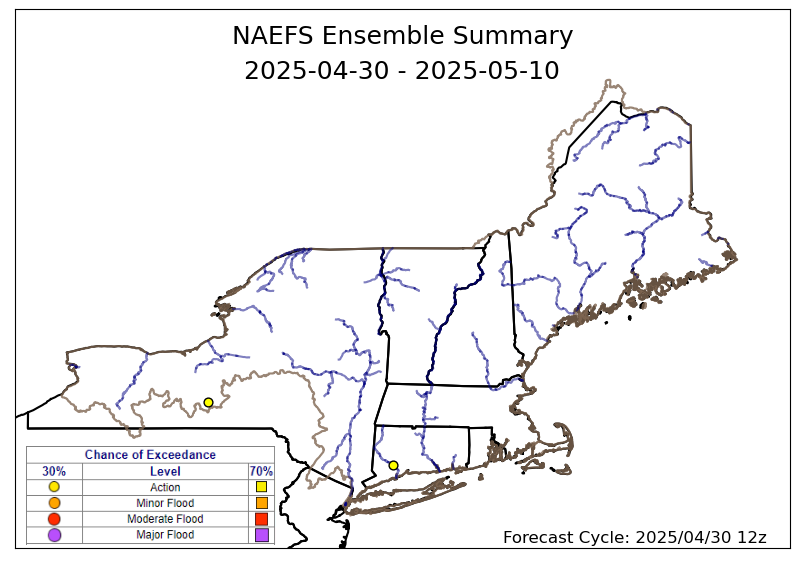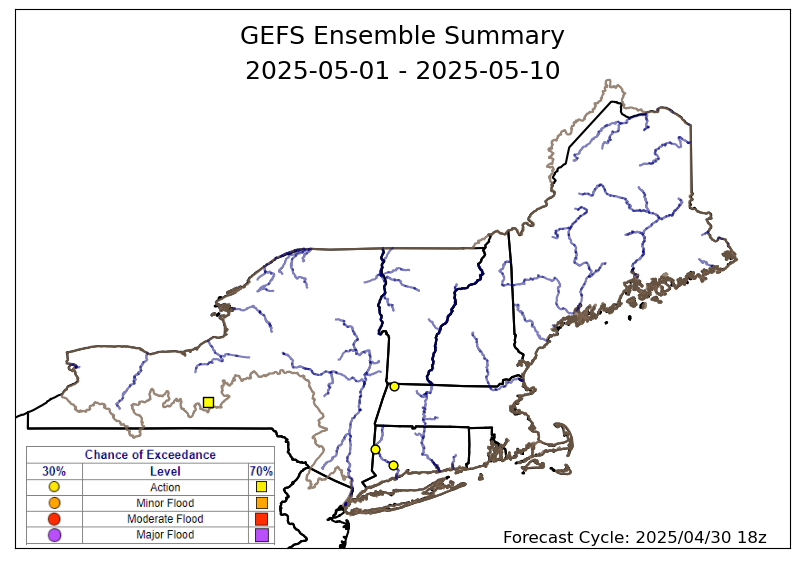Northeast RFC
River Forecast Center
|
Current Modeled Snow Depth across New York and New England |
Current Modeled Snow Water Equivalent (SWE) across New York and New England |
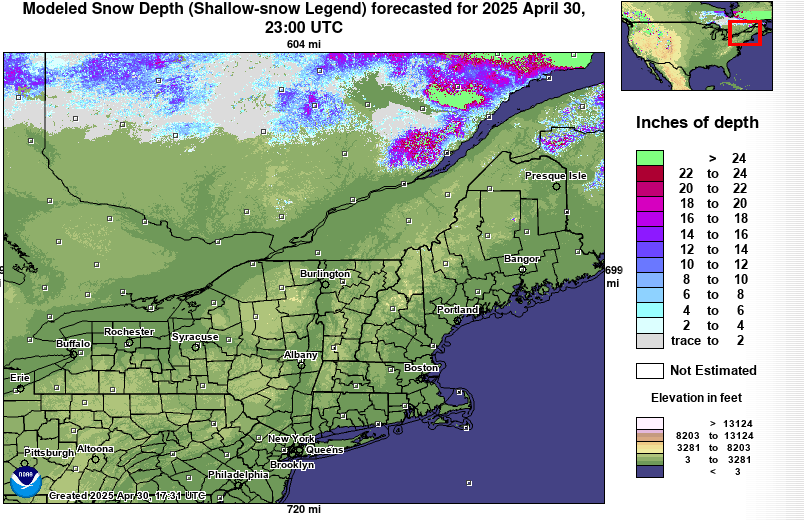 |
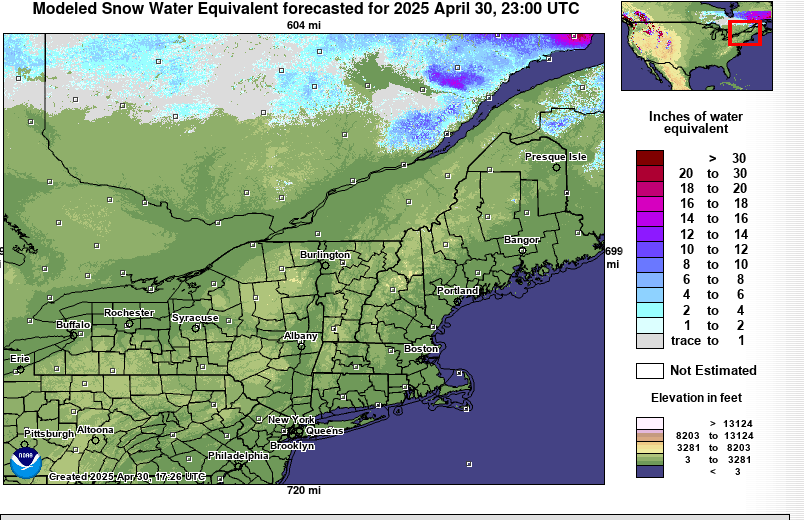 |
|
Current Modeled Snowpack Temperature across New York and New England |
Current Modeled Snowpack Density across New York and New England |
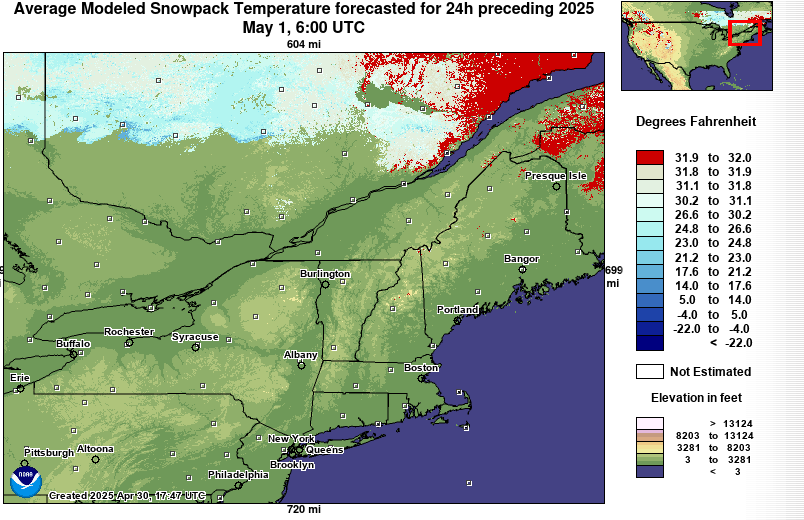 |
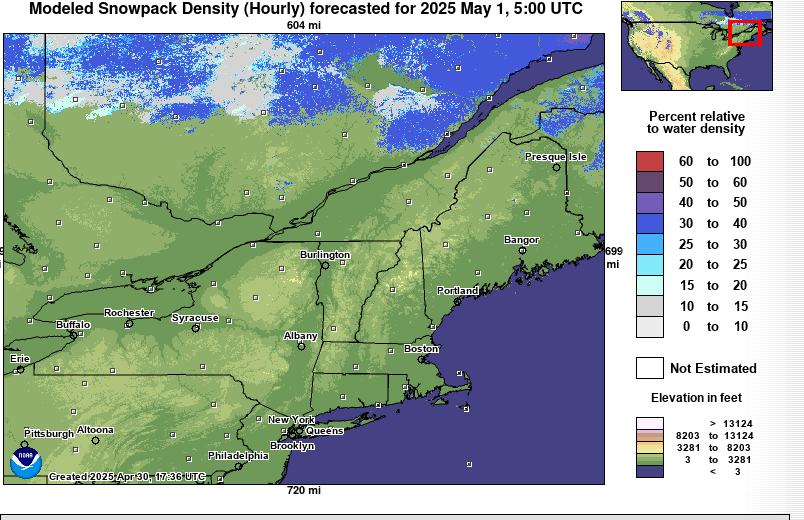 |
|
Current Estimated Ice Thickness across New York and New England |
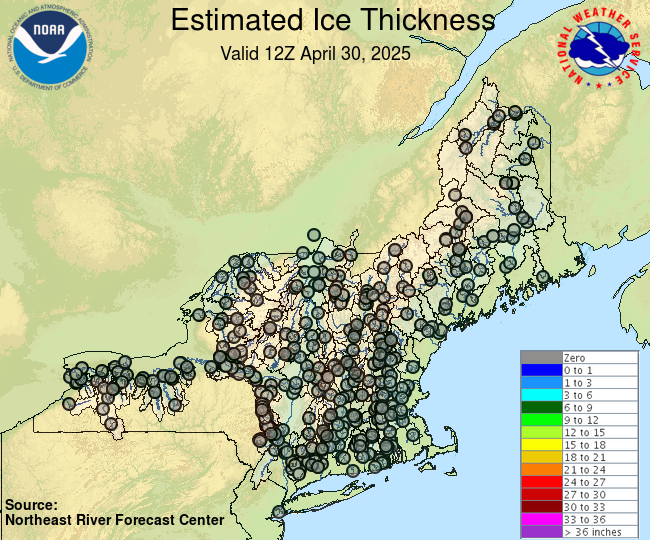 |
For more snow information please visit our webpage at: https://www.weather.gov/nerfc/snow
| Long Term Palmer Drought Severity Index |
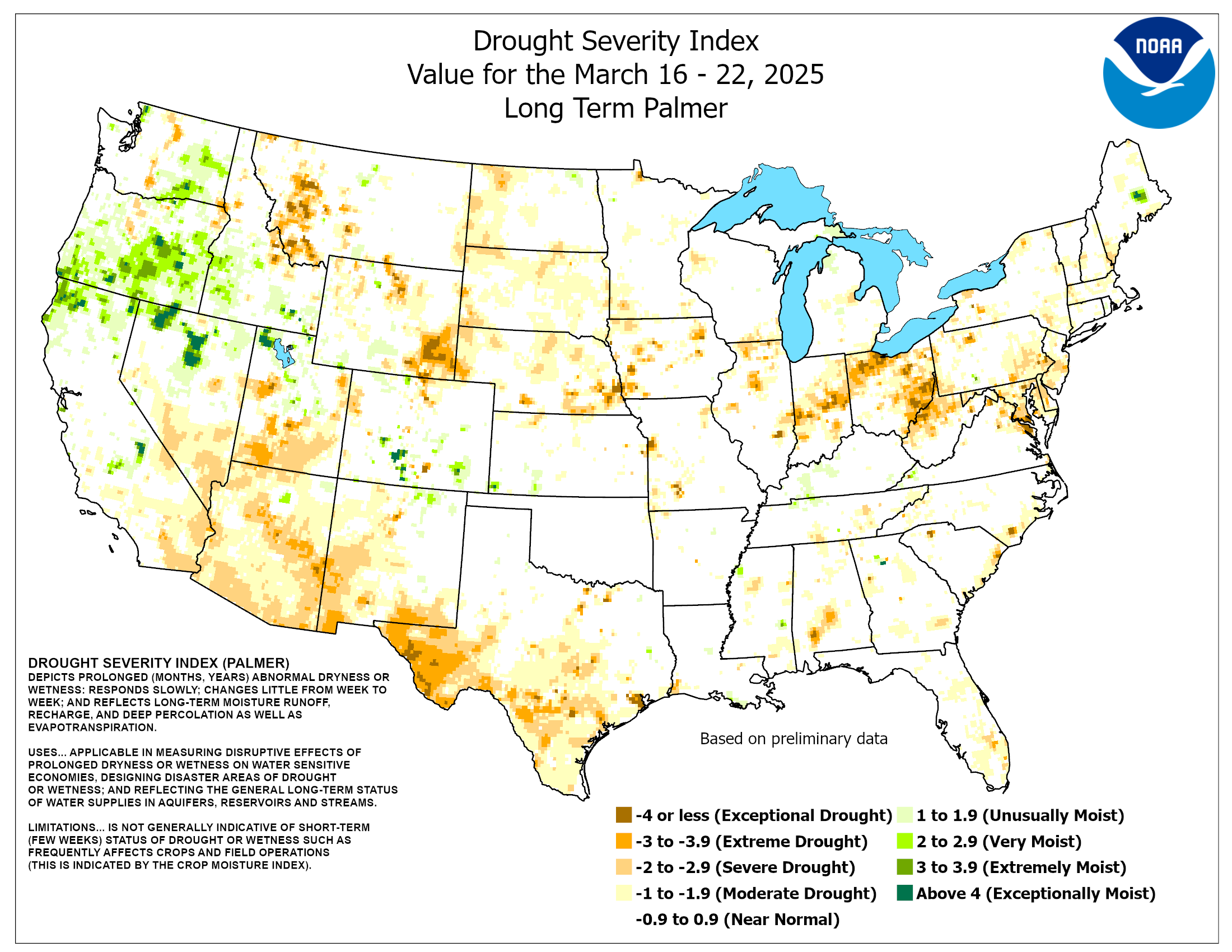 |
The long-term Palmer drought severity index is useful to estimate deep soil moisture conditions.
Additional soil moisture data is available from the Climate Prediction Center (CPC) at the following locations:
https://www.cpc.ncep.noaa.gov/products/Drought/Monitoring/smp.shtml
https://www.cpc.ncep.noaa.gov/products/Soilmst_Monitoring/US/Soilmst/Soilmst.shtml
US Dept of Commerce
National Oceanic and Atmospheric Administration
National Weather Service
Northeast RFC
46 Commerce Way
Norton, MA 02766
(508) 622-3300
Comments? Questions? Please Contact Us.


